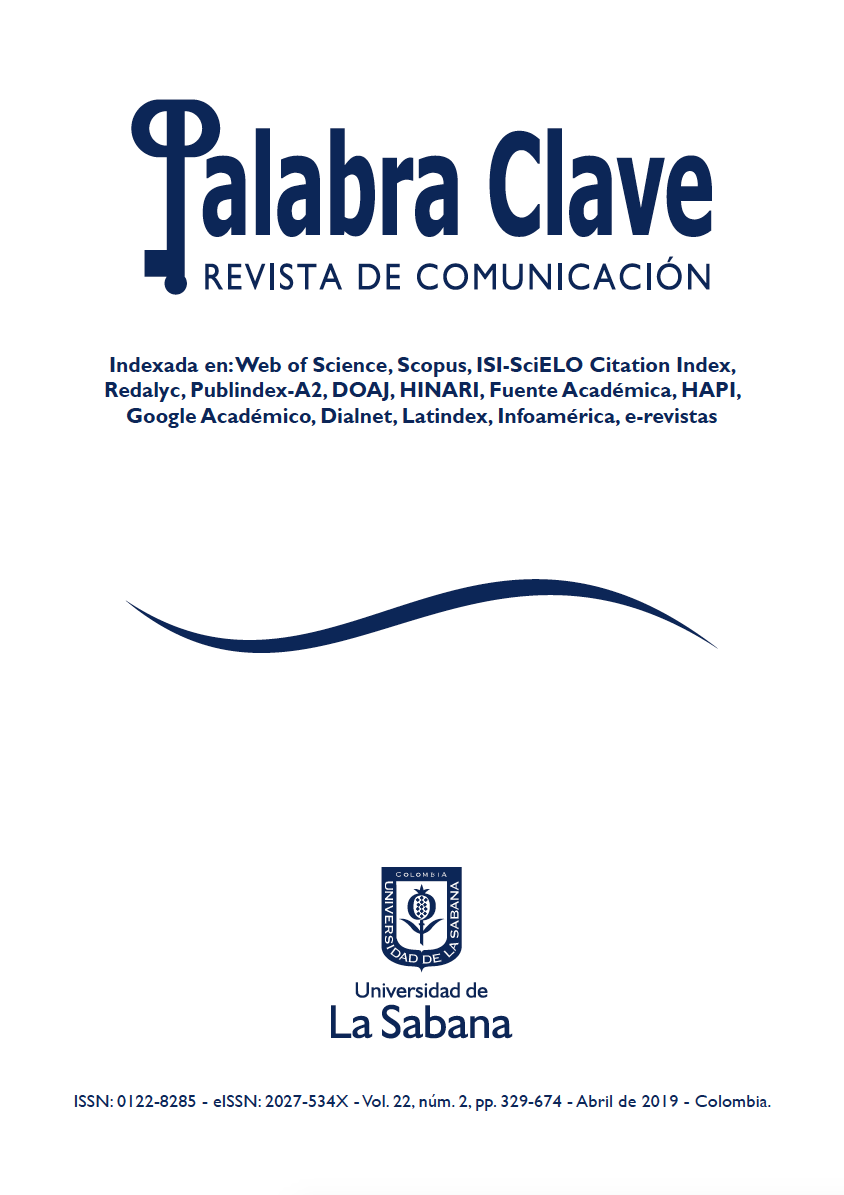Aproximación técnico-social al entendimiento de la disrupción digital
DOI:
https://doi.org/10.5294/pacla.2019.22.3.1Keywords:
Technology, society, social simbolism, construction of technology, social construction of technology, SCOTAbstract
Socio-technical approach to the understanding of the digital disruption
Abordagem técnico-social para a compreensão da ruptura digital
Society and technology transform themselves mutually. This is a constant interaction that creates a series of hybrids. Advances in technology can not be understood without the comprehension of deep social, political, and economical changes that humanity confronts; but, also, it is not possible to explain societies without the changes produced by technology, once it is settled and spread in the communities. This editorial proposes a socio-technical approach to understand this interaction of technology and society from the academic research.
Cómo citar esta editorial / How to cite this editorial / Para citar nesta editorial
García-Perdomo, V. (2019). Aproximación técnico-social al entendimiento de la disrupción digital. Palabra Clave, 22(3), e2231. DOI: https://doi.org/10.5294/pacla.2019.22.3.1
Downloads
References
Bijker, W. E. (1997). The social construction of fluorescent lighting, or how an artifact was invented in its diffusion stage. In W. E. Bijker & J. Law (Eds.), Shaping technology, building society: Studies of sociotechnological change (Second ed., pp. 75–102). Cambridge, Mass: The MIT Press.
Bijker, W. E. (2012). The social construction of Bakelite: Toward a theory of invention. In W. E. Bijker, T. P. Hughes, & T. Pinch (Eds.), The social construction of technological systems: New directions in the sociology and history of technology (Anniversary). Cambridge, Mass: The MIT Press.
Bijker, W. E., Hughes, T. P., & Pinch, T. (Eds.). (2012). The social construction of technological systems: New directions in the sociology and history of technology (Anniversary). Cambridge, Mass: The MIT Press.
Douglas, S. (1987). Inventing American Broadcasting, Baltimore: Johns Hopkins University Press.
Klein, H. K., & Kleinman, D. L. (2002). The Social Construction of Technology: Structural considerations. Science, Technology & Human Values, 27(1), 28–52. DOI: http://doi.org/10.1177/016224390202700102
Howard, P. N. (2002). Network Ethnography and the Hypermedia Organization: New Media, New Organizations, New Methods. New Media & Society, 4, 550–574. DOI: https://doi.org/10.1177/146144402321466813
Latour, B. (2005). Ressembling the social: An introduction to actor-network-theory. New York: Oxford University Press.
Law, J., & Bijker, W. E. (1997). Postscript: Technology, stability, and social theory. In W. E. Bijker & J. Law (Eds.), Shaping technology, building society. Cambridge, Mass: The MIT Press.
Lewis, S.C. & Westlund, O. (2015) Actors, Actants, Audiences, and Activities in Cross-Media News Work, Digital Journalism, 3:1, 19-37, DOI: https://doi.org/10.1080/21670811.2014.927986
Mosco, Vicent (2004). The Digital Sublime: Myth, Power, and Cyberspace. Cambridge: MIT Press.
Plesner, U. (2009). An Actor-network perspective on changing work practices: Communication technologies as actants in newswork. Journalism 10(5): 604–26. DOI: https://doi.org/10.1177/1464884909106535
Schmitz, A., & Domingo, D. (2010). Innovation processes in online newsrooms as actor-networks and communities of practice. New Media & Society, 12(7), 1156–1171. DOI: https://doi.org/10.1177/1461444809360400
Streeter, T. (2010). The Net Effect: Romanticism, capitalism and the Internet, New York: NYU Press
Published
How to Cite
Issue
Section
License
1. Proposed Policy for Journals That Offer Open Access
Authors who publish with this journal agree to the following terms:
- Authors retain copyright and grant the journal right of first publication with the work simultaneously licensed under a Creative Commons Attribution License that allows others to share the work with an acknowledgement of the work's authorship and initial publication in this journal.









